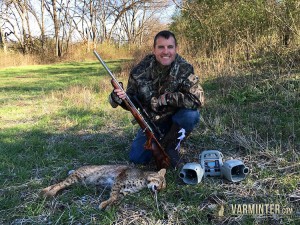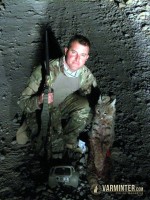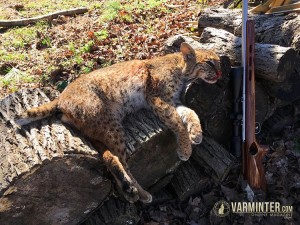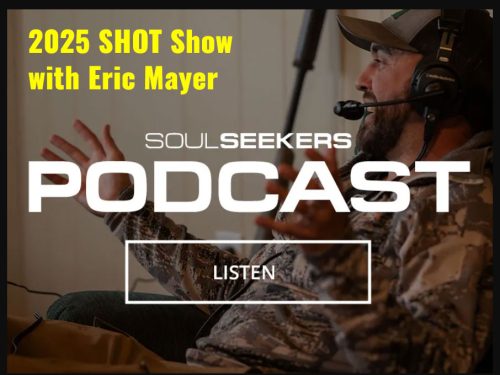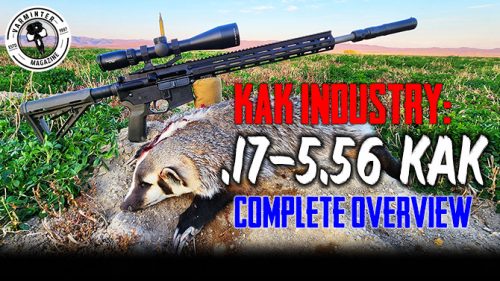My name is Matt, and I recently freed myself from the State known as California, and moved to Tennessee. While I have only been hunting for a handful of years, almost all of it has been in the deserts of California. So, when I moved to Tennessee, I experienced a slightly different kind of hunt than I was used to. This article is going to discuss two different bobcat hunts from California and Tennessee. Including some thoughts on the differences.
My California Bobcat Hunt:
Curiosity killed the cat (with a little help from a .243):
It had been a long day and a half of hunting for predators in the desert of southeastern California. Typically, we see a lot of coyotes when hunting at night in this area. However, on the fourth stand, of the first night, we had a coyote run past us but couldn’t get it to stop. That coyote ended up being the last one we saw rest of the trip. We hunting till 6:00 AM the next morning, with nothing else coming to the call.
We took a break for a few hours, and got back at it at 9:00 AM, hunting the entire day. Even though we hunted hard, we did not have any animals respond the entire day. When the sun went down, we headed into town to get some gas, and make some stands in that general area. On the first stand, we finally got some eyes shining back at us. Unfortunately, it was a Kit Fox, which are protected here in California. They are cute little foxes, that are not very smart. When my hunting buddy changed the sound on the FoxPro to a coyote bark, it came running in to what would have been a pretty gruesome death. It was lucky that it wasn’t a real coyote!
We made the decision to call a new area no one in the party had hunted before. Going into a new area at night can pay-off, or be a bust. After a bumpy drive into the area we made our first stand. I honestly didn’t think we had a chance in hell, of calling in anything because I thought the area we where in was a bowl, but we actually set-up in where there was a flat, open area, to one side. I know you always read about predators coming in within a minute or two, but I had never experienced it first-hand. This stand made me a believer. The call was only running a couple minutes, when my partner who was working the red light, tapped me. I was standing next to him ready to go, with my rifle resting on some shooting sticks. As I turned, I could see a set of eyes shining back off in the distance. I adjusted myself to face the direction of the eyes, and started following it as it started to move around a bit, then stop. I shouldered my rifle, and found the animal’s eyes in my scope, but could not determine if it was a coyote, or another small fox. As it moved through the brush, we kept the light on it, losing it as it approached. Finally, it moved into a position where I could see that it was a bobcat! My partner told me to take a shot when I had a clear shot, so I leveled my Savage 10/110 Predator Hunter rifle, chambered in .243, and found the bobcat in my scope. I moved the Nikon Coyote Special BDC onto the body of the bobcat, and squeezed the trigger. At the shot, I expected the bobcat to be laying on the ground, but when I recovered from the “CRACK”, I saw the bobcat sitting in the same spot! I missed! I took a second to calm myself, and recomposed my shot. I found the bobcat in the scope again, and squeezed. This time, the 58 grain Hornady V-Max hit its mark, and I saw the bobcat flop onto the ground. WooHoo! My first predator, and it’s a California BOBCAT!
After the shot, in my excitement, I committed a rookie mistake and did not wait a while after the shot. My mind was racing, and I did not want to lose the bobcat, if my shot wasn’t well placed. It turns out, while I was walking out, I saw a set of eyes in the distance. Thinking they belonged to the bobcat I just shot, I started walking towards them. Apparently, at the shot, my partner noticed another set of eyes out in the same general area. By the time I realized what was going on, the headlamp on my head, as well as the lights behind me, created a situation where I could not get a clear sight picture in my scope. So, I watched the second bobcat walk off!
Afterwards, I turned my head slightly, and saw my bobcat laying on the ground next to a bush. The bobcat was a nice female, about 20 pounds, and had a really nice spot pattern, but the shot was placed poorly, so it tore it open. The hole did not dampen my excitement. It was an absolute rush, and made up for all the dry stands we had during the hunt. I filled out my California bobcat tag, cleaned out the guts, and bagged her for a trip to the taxidermist. My plan was to have a head/shoulder mount done, and have the skull cleaned and whitened. The remaining fur would be stretched and tanned.
Although we made a few more stands, we did not call anything else in, so we called the trip a success and headed home.
Open desert, with lots of predators, and night-calling, was my experience in California. It was great that my first predator was a bobcat, and I ended up taking another before leaving California for Tennessee. It was a great experience, but I was looking forward to the new hunting opportunities I would have in Tennessee.
My Tennessee Bobcat Hunt:
It had been a while since I moved to Tennessee, but because I was busy with my move and job change, I hadn’t been out hunting in a while. Then, my brother-in-law asked if I wanted to go predator calling. Of course, I jumped at the chance, so we headed out to an area behind his house. We made a couple of stands, with no responses. Since the area is not that big, we decided to do one more stand, and call it a day. We set-up in an area that bordered some trees, that was lined with thick brush. Next to the trees, and thick brush, was an open area with grass. About 15 minutes into calling, I looked up and saw a bobcat head sticking out of some twigs. It was focused on my FoxPro caller, with the Jack Attack decoy on it. It was only 20 yards in front of me, and never turned its head. It was so fixated on my decoy, that when I raised my Savage .17HMR and took the shot, it never knew what happened. The 15.5 grain NTX bullet (I was still using the lead free ammo I had to use in certain areas of California). This bobcat was a big tom, that weighed in at 21 pounds. To make the moment even better, it was the first time my brother-in-law had hunted with a predator caller like this, and he was amazed. Like me, after my first hunt, I think he’s hooked!
Final Thoughts:
This hunt was so much different than my California hunt. Hunting the deserts normally means less vegetation, with longer shots. You can also see them coming in from a long way. In the area we hunted here in Tennessee, the area we had access to was small, and the terrain and flora was completely different. Trees, with thick brush, is the norm, with some open areas. Any potential shots would have been within 75 – 100 yards. For my California hunt, I used a bigger rifle caliber that could reach out, and put the animal down. Here in Tennessee, I went with the Savage .17HMR, because I know my rifle well enough to place my shots and put the animal down. Both hunts were very exciting, and both bobcats had their own unique look and patterns. As I gain more ground to hunt, and get more familiar with the habits of Southeastern predators, I will submit more articles with some fresh thoughts on the difference of hunting out here in Tennessee.
- Bobcat Hunts from California and Tennessee - February 12, 2016

